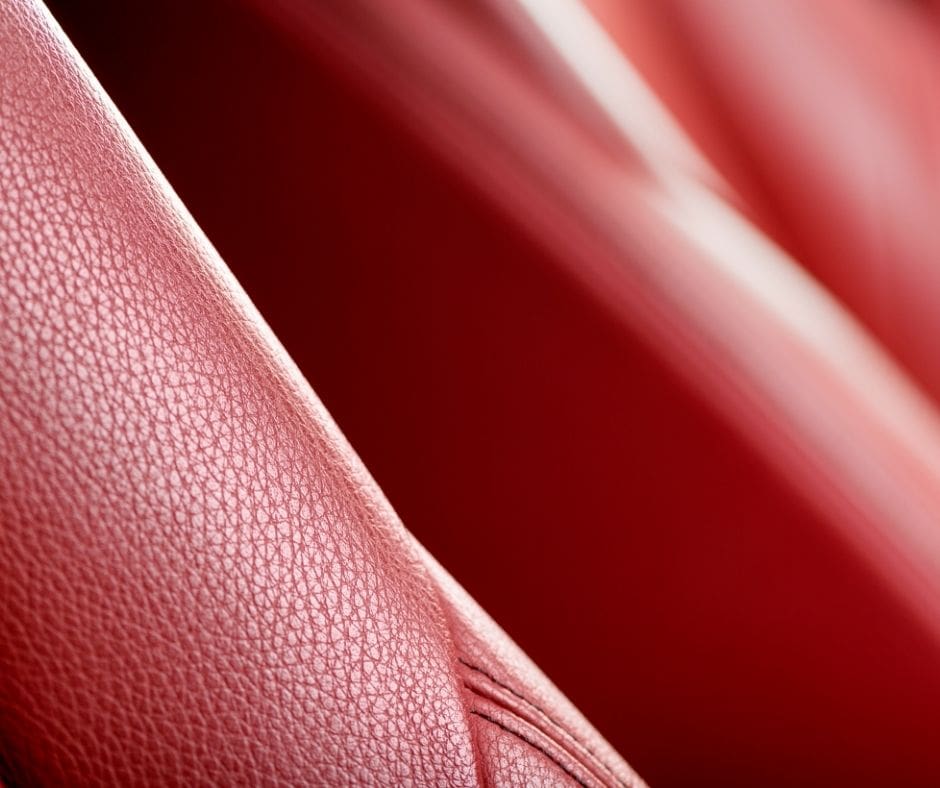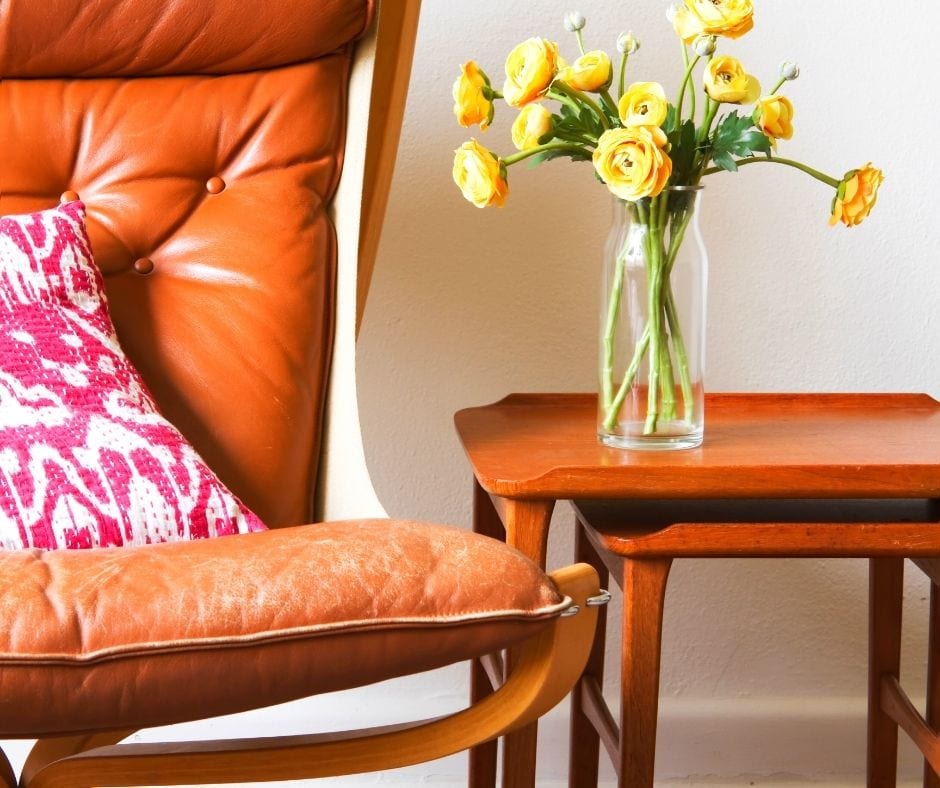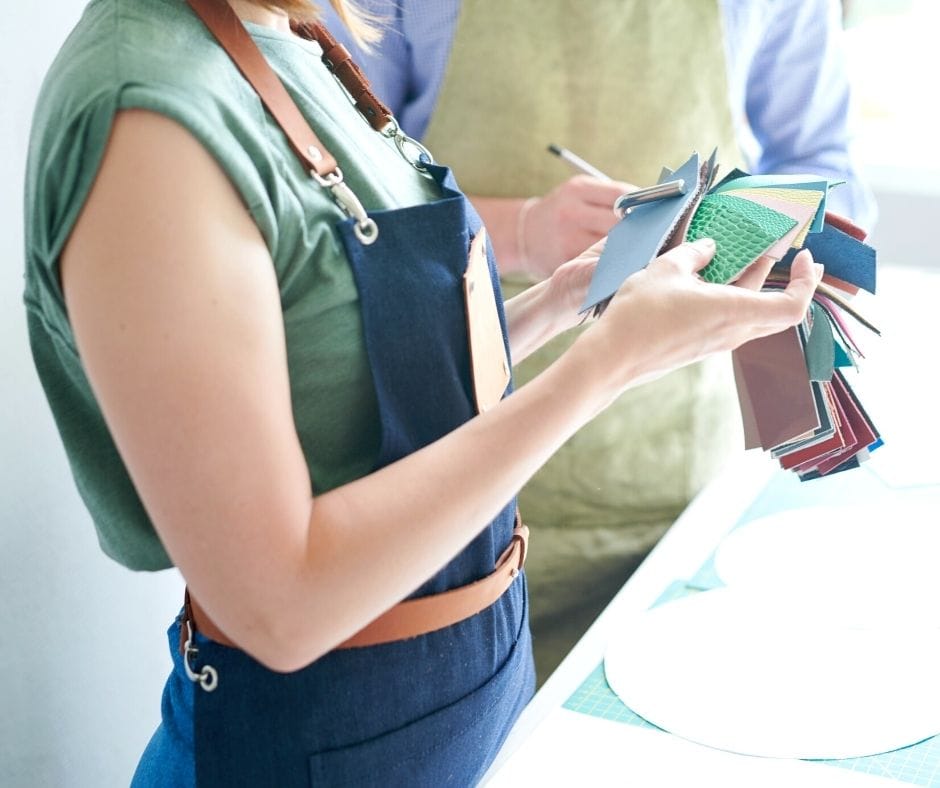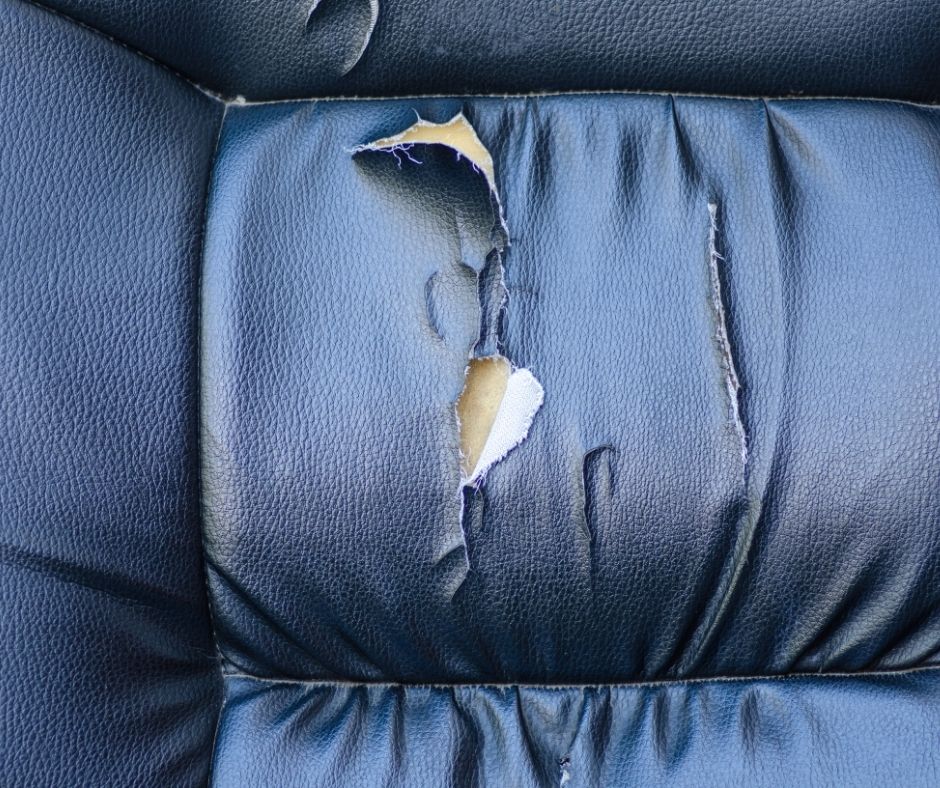Among the four grades of leather, top grain leather is considered among the best to use in making furniture. It is easy to work with and has a reputation for lasting a long time, which makes it a good investment.
As long as you take some basic steps to preserve the leather, like preventing the leather from peeling, top grain leather’s reputation is well justified.
We put together this guide on top grain leather to provide you with information about it and how to care for it. We also included some tips on how to tell top grain leather from inferior kinds of leather. Those won’t last as long as top grain leather, but they have the advantage of being cheaper to buy.
In This Article We'll Discuss
What is Top Grain Leather?
There are four grades of leather: full grain, top grain, genuine leather, and bonded. Of those, top grain is the second highest in terms of quality.
To make top grain leather, you take an animal hide and separate it into two layers. Top grain leather is the top layer, but with the very outer edge sanded off to remove blemishes. As a result of sanding it down a bit, it is high-quality leather but also easy to work with.
If you don’t sand out the blemishes, you have full grain. It looks more natural and is generally considered the highest quality, but it’s a bit more rigid than top grain. It also develops that deep, rich shine, called a patina, that classic leather couches develop.
The bottom layer is reserved for genuine and bonded leathers, and also suede. These are of a lower quality, so they also are the most affordable.
How to Care For and Prevent Top Grain Leather From Peeling

The key to preventing top grain leather from peeling is excellent, consistent maintenance. Keep in mind that leather is animal skin, and the same basic things you do to keep your own skin supple and soft will work on leather.
Keep it clean. When you spill something on it, clean it immediately. Make sure you get as much of it up as possible. When you do a periodic cleaning, make sure you use an appropriate leather soap or a nubuck cleaning cloth. These are designed specifically for use on leather.
Twice a year, you’ll want to condition it with a high-quality leather conditioner. Make sure your leather is kept in a cool, dry place, and don’t cover it in plastic. Damp leather with plastic over it can develop mold.
Eventually, the appearance of top grain leather will start to fade and it will also start to peel.
How Long Does Top Grain Furniture Last?

Properly maintained, top grain furniture should last at least a decade and maybe as long as 15 years. The key is properly maintaining it.
Some things will affect its longevity, most of which are within your ability to influence.
When purchasing furniture made from top grain leather, examine it closely to make sure it doesn’t already have wrinkles or cracks in it. Purchase it with a protective coat already applied. The coat will extend the furniture’s lifespan, although be prepared for its eventual demise.
Of course, you’ll also want to stay on top of maintenance. Keep it as clean as possible and regularly clean it. Twice a year, you’ll want to condition it. If possible, minimize heavy usage (kids jumping on it).
Quality of Top Grain leather vs Faux Leather and Bonded Leather

Top grain leather is considered the second-highest quality of leather, only behind full grain.
Bonded and faux leather aren’t actually leather, made of different materials. Bonded leather is roughly 20 percent bits and pieces of leather cemented together and coated with polyurethane and spray-painted to look like leather. Faux leather is entirely synthetic, usually made from vinyl.
Telling them apart is pretty simple. First, look at the tag. It will tell you whether the furniture is top grain leather or bonded/faux leather.
You can also examine the material. Top grain leather will still have some skin markings and imperfections. Bonded/faux leather will have a consistent appearance. Top grain leather will also feel and smell like animal skin. Bonded/faux leather will feel and smell synthetic.
Top grain leather is strong and durable. It will last a long time, although it will start to lose its luster. It’s also a lot more expensive.
The quality of bonded leather has improved dramatically in recent years, but because it consists of leather bits and pieces glued together it wears out quickly. It is also easy to clean.
Faux leather is the cheapest, but also the cheapest looking. If animal rights is an issue you are passionate about, one big advantage is that no animals were harmed to make it. Top grain leather is quite literally animal skin.
Can You Repair Damaged Top Grain Leather?

While you might consider taking a damaged piece of top grain leather to a professional for repair, if the damage is slight you might be able to repair it yourself.
The easiest way to repair top grain leather is to clean and condition it. You can use a proper leather cleaner, and that’s recommended because leather couches are expensive. But, you can also clean it with a combination of distilled or purified water and mild dish soap.
Conditioning it after cleaning is where the real repair takes place. Let it air dry first, and use a product designed specifically for top grain leather. If you spent a good bit of money on the furniture, don’t skimp on the maintenance products.
Dab the rough patch with the conditioner, allowing it to fill in all the cracks. Wait for it to dry — two hours is a good rule of thumb — and reapply conditioner until the leather is again smooth.
If the cracks are a bit deeper, you might have to use a leather filler. It’s the same basic process, starting with a thorough cleaning and waiting for it to dry completely.
Before you apply the filler, however, you’ll want to gently sand the patch with medium-grit sandpaper, like 600. When it is smooth and has a uniform feel, buff it with a microfiber cloth to pick up the little bits.
Apply the leather filler with something thin, rigid, and dull. A butter knife or a credit card works well for this. Scrape up the excess and apply another layer after six hours.
Filler has no color, so you’ll probably want to apply some leather dye. Make sure you get dye of the same color as your couch.
You can also use the dye for very minor damage. Sand it as you would for filler, and apply the dye with a sponge. Dry it with a hairdryer on high for approximately two minutes. Reapply dye as necessary.
Conclusion
Top grain leather is an excellent option for furniture and other leather goods. It’s less expensive than full grain, and while it lacks the style of full grain it’s easier to work with because it is more supple. It also has a justified reputation for quality, especially if you practice good care.
We hope you found this article helpful and keep it bookmarked for when you need to take care of top grain leather furniture. If you found it especially helpful, we’d encourage you to leave a comment below or share it on social media.

